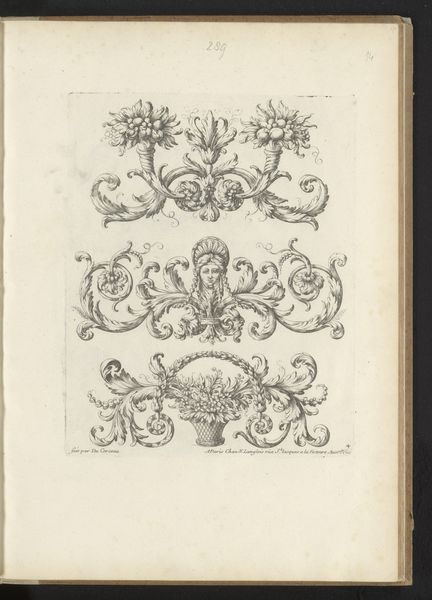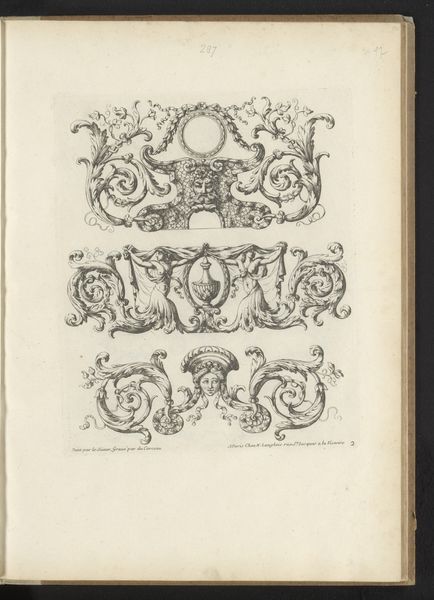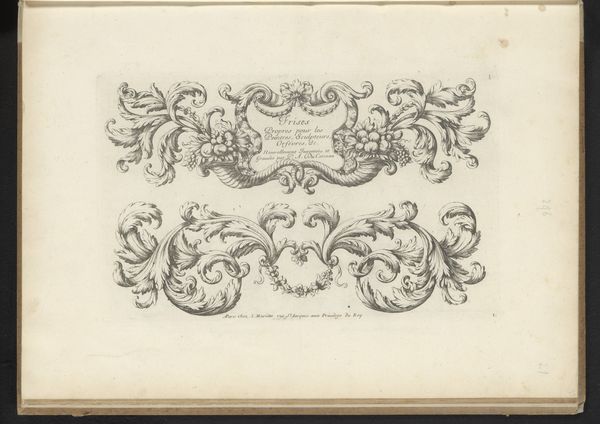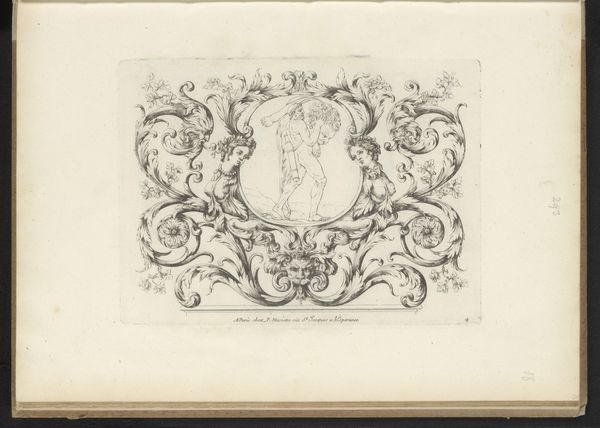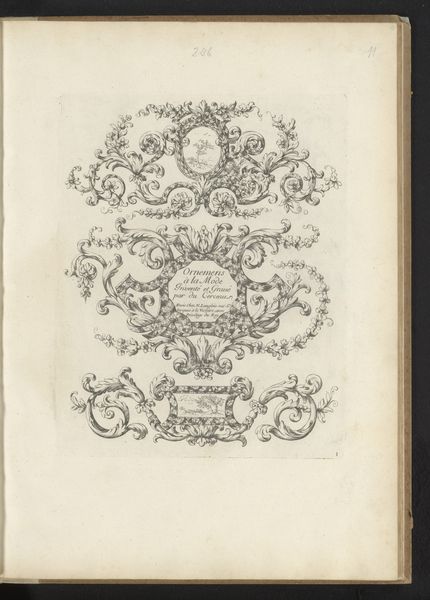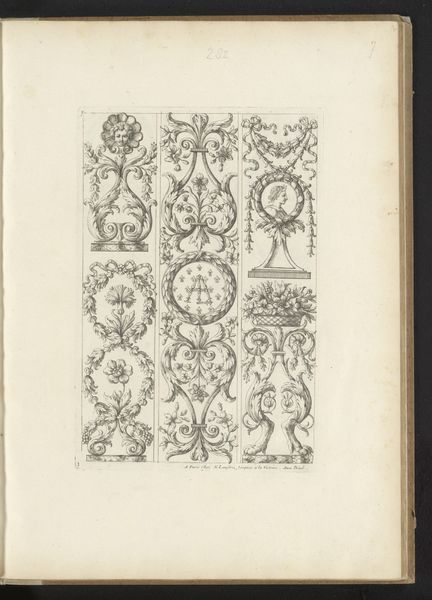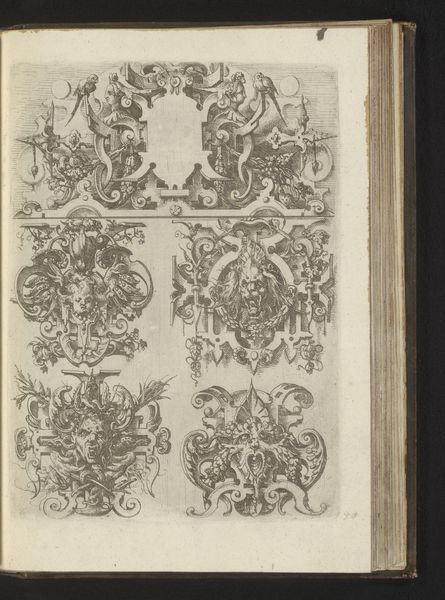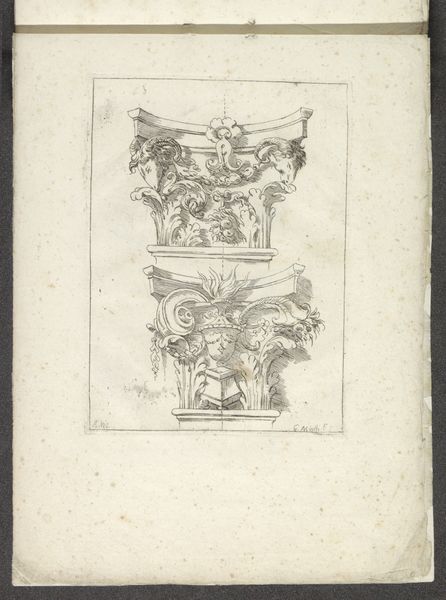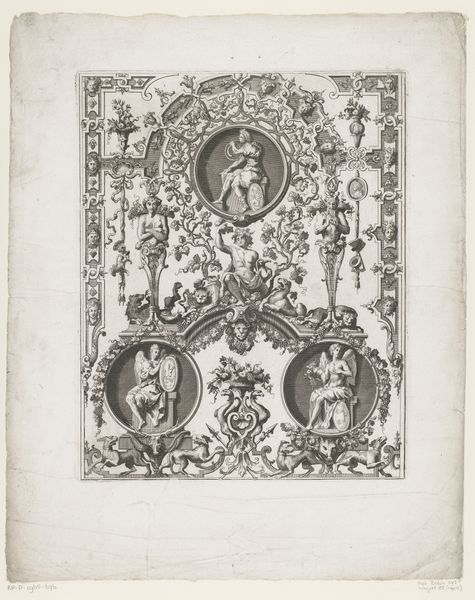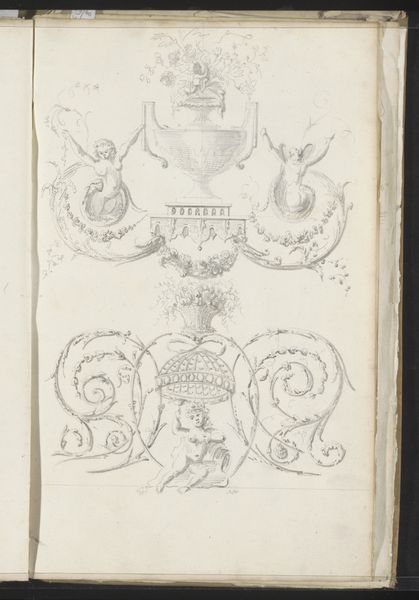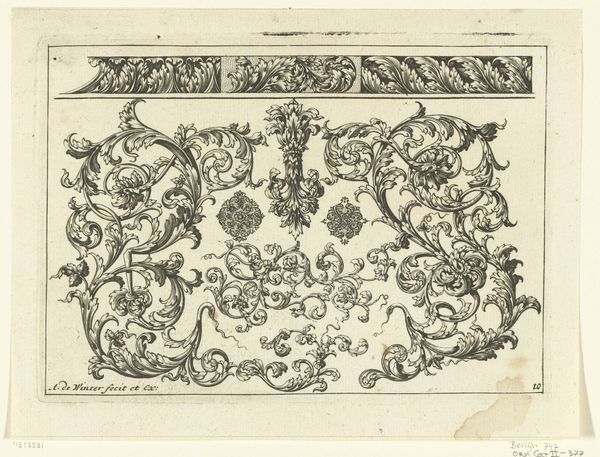
drawing, graphic-art, engraving
#
drawing
#
graphic-art
#
baroque
#
form
#
line
#
history-painting
#
decorative-art
#
engraving
Dimensions: height 258 mm, width 211 mm
Copyright: Rijks Museum: Open Domain
Editor: This is "Drie ornamenten met maskers," or "Three Ornaments with Masks," a drawing by Paul Androuet Ducerceau from around 1670 to 1690. It looks like an engraving or a print. There’s a very formal, decorative feel. How do you interpret the visual language in this work? Curator: Well, first off, notice the period – late 17th century. Ornament, especially in Baroque design, was not just about prettiness; it was about power. These aren’t mere decorations. They’re statements. The masks, combined with the swirling foliage, what might they be communicating about identity and social roles at the time? Think about the theatre, about performance, and the elaborate social codes of the era. Editor: Performance...So, you're suggesting these aren’t just designs, but reflections of how people presented themselves? Curator: Precisely. The masks obscure, but they also project a certain image, a certain status. Ducerceau’s designs, likely intended for interiors or furnishings, bring these ideas into the domestic sphere. Who gets to perform, and in what spaces? The Baroque wasn't a democratic aesthetic, was it? These swirling, elaborate forms would have been extremely costly, and are signs of exclusivity and power. Editor: It’s interesting to consider decoration as a reflection of social and political structures. I never would have looked at ornamental designs through that lens. Curator: Art doesn't exist in a vacuum. Examining even seemingly simple designs like these opens a window into a world of social hierarchies and the ways people navigated them. The question is, what kind of labor allowed the creation of these very intricate designs?
Comments
No comments
Be the first to comment and join the conversation on the ultimate creative platform.
